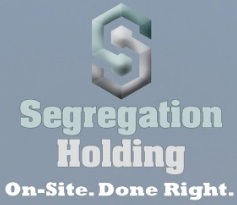Over the past 5 years, the commercial real estate insurance industry has been faced with substantial increases in both mold-related claims and payout amounts due to these claims. Mold is the fastest growing risk management problem in the U.S. This has caused almost all insurance companies (both property and liability) to exclude insurance coverage due to mold. This has left property managers, owners and lenders with unprecedented levels of newly uninsured risks.
There is no way for an insurance company to predict mold claims or their frequency and charging appropriately for them has proven impossible up to this point. Mold related claims and losses are growing at such rapid rate across the country, the manner in which they are rated to be charged for, cannot be done.
Mold exclusions currently are and will continue to affect the indemnity agreements in the procurement contracts between the property managers and the property owners, since these agreements are normally built with an insurance backstop between the parties. Both property managers and property owners can fill the gaps in insurance coverage for mold through the purchase of specially modified environmental impairment liability insurance policies. There are many more coverage options available in the environmental insurance industry. Your standard “off-the shelf” environmental policy will need to be modified to provide coverage for mold related damages by adding mold, fungus, and microbial matter to the definition of covered “pollutants” under the policy.
Can both property managers and property owners be covered under the same policy?
Yes; both property managers and property under the same policy or either party could obtain their own environmental insurance policy. This is a perfect compliment to apartment building insurance and single family rental insurance (traditional) policies.
What are the top items that contributed to the increase in mold claims?
1. Changes in building materials and techniques
2. An emphasis on energy efficient buildings
3. Poor craftsmanship on new construction
4. New science is making it possible to prove mold damages
5. There have been literally hundreds of thousands of successful claims, for billions of dollars
What can property managers and owners do to avoid mold related issues at their properties?
A trend has developed over the last few years to hold a corporation’s management accountable for its strategic decision-making process as it relates to mold and environmental matters. This means that the EPA and the corporation’s shareholders and employees expect that certain components of a corporate environmental risk management program should be in place.
Mold related risks are relatively easy to manage. If you keep water out of your buildings, there is no risk for mold. You can see and smell mold and recognizing it is simple during routine inspections of the property. Here are some additional steps to follow help in managing your mold risks:
Create protocols to avoid or quickly respond to water intrusion in buildings.
1. Quickly eliminate human exposure to indoor mold at high concentrations
2. Address mold in all risk financing protocols
3. Get multi-disciplined help in the process
Make sure (when reviewing the current insurance policy that is in place) that the policy specifically addresses mold as a covered loss. If mold is a covered peril, most times the limits are low with minimal coverage afforded after factoring in the property deductible. Be proactive – ask if the limits can be raised on the current policy. There will be an additional charge for this but it will be a fraction of what will potentially paid out in the event of a loss. As a general rule, if you are reading the exclusion section of any insurance policy looking for the mold coverage, there will be trouble if there is a claim.
As you review your current policies, do not be confused when you see coverage for pollutants. Pollutants means any solid, liquid, gaseous or thermal irritant or contaminant, including smoke, vapor, soot, fumes, acids, alkalis, chemicals, and waste. Waste includes materials to be recycled, reconditioned or reclaimed. The problem with this is it is uncertain if mold falls into this definition. In theory, pollution coverage in traditional insurance policies should not eliminate mold coverage as a covered peril, but it can. To be certain that your policy has coverage included that applies to mold, it needs to specifically say MOLD.
We recommend that property managers and owners carry their own insurance for mold related damages in addition to their apartment building insurance and single family rental insurance policies. These types of policies should be considered just as important as your General Liability, Property, and Professional Liability policies.
Would you like our team to do a comprehensive review of your real estate building insurance coverage?


